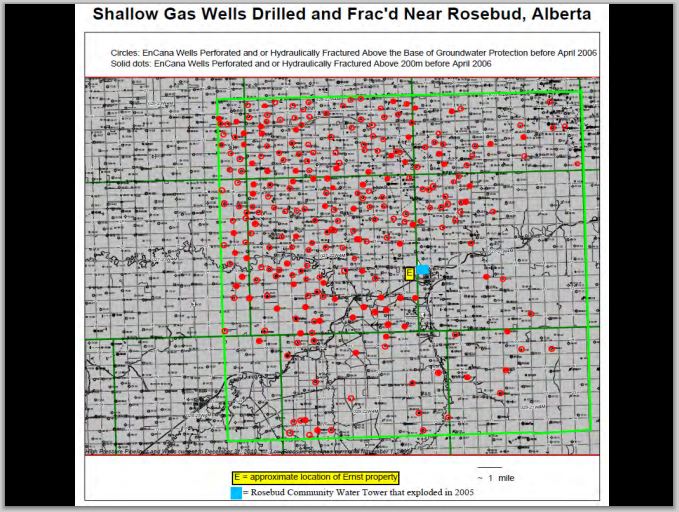Both sides in Pavillion groundwater lawsuit agree to delay by Mead Gruver, May 7, 2015, The Associated Press
Both sides in a federal lawsuit over potentially tainted groundwater in the Pavillion area have agreed to suspend certain proceedings in the case pending the upcoming release of a state report on pollution testing of water wells.
The Wyoming Department of Environmental Quality initially planned to release a report late last year on testing of domestic water wells in the area. Now the agency plans to complete a draft late this month and release the report to the public in early July.
Last year, Jeff and Rhonda Locker sued Denver-based Encana Oil and Gas USA, alleging gas development near their property contaminated their groundwater. The Lockers sued in state court, but Encana successfully got the case moved to the U.S. District Court for Wyoming.
Encana denies the allegations.
Late last month, both sides agreed to temporarily hold off on designating and hearing from experts pending the release of the DEQ report. U.S. District Judge Scott Skavdahl had not ruled on the motion as of Wednesday, according to available records.
Last year, a consultant for the department sampled water from 13 domestic water wells near Pavillion. The consultant in turn hired a contractor to verify the data quality, said Mark Thiesse, DEQ project director.
“Unfortunately that took way longer than we wanted it to,” Thiesse said.
The state investigation follows one by the U.S. Environmental Protection Agency. In late 2011, the EPA released a draft finding that theorized hydraulic fracturing — the practice of pumping water mixed with smaller volumes of fine sand and chemical products into wells to split open oil- and gas-bearing formations — contributed to groundwater pollution in the Pavillion area.
The EPA handed off its investigation to Wyoming officials in 2013 without opening its report to scientific peer review or otherwise finalizing it. [Emphasis added]
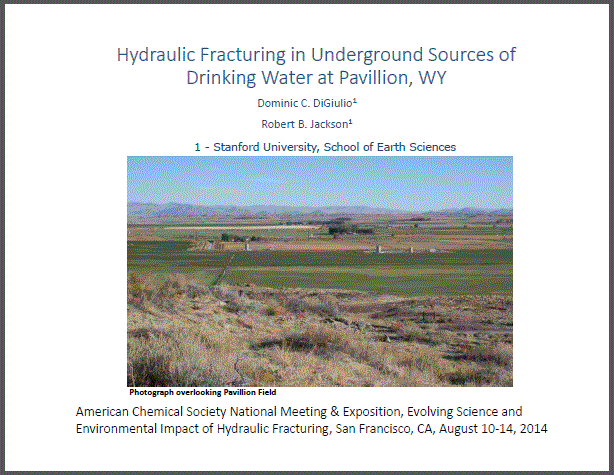
…
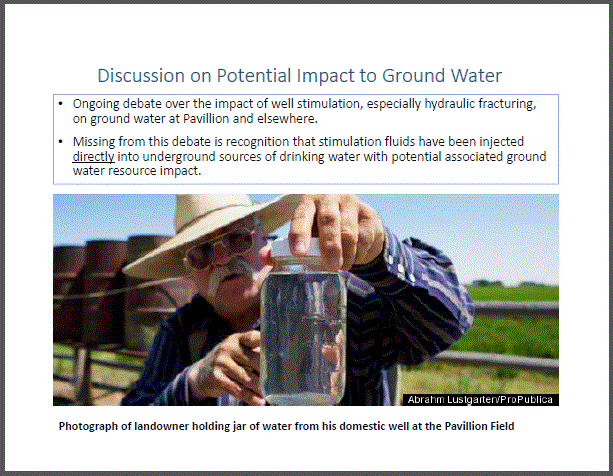
…
Conclusions
The Wind River and Fort Union Formations in the Pavillion Field meet criteria as
Underground Sources of Drinking Water (USDWs).
Thousands of gallons of undiluted diesel fuel and millions of gallons of fluids
containing numerous inorganic and organic additives were injected directly into these USDWs during hundreds of stimulation events.
[Refer also to:
Encana fractured directly into fresh water zones on about 200 gas wells (red above) near Rosebud, Alberta
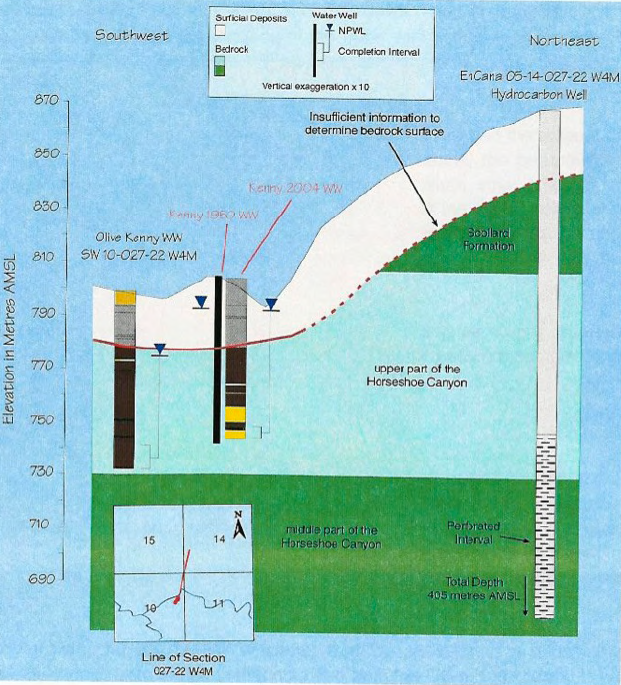
March 2004: Encana injected 18 million litres of frac fluid directly into Rosebud’s drinking water aquifers
Source: EnCana Corporation Site Investigation Report by Hydrogeological Consultants Ltd. File No.: 04-510, January 2005
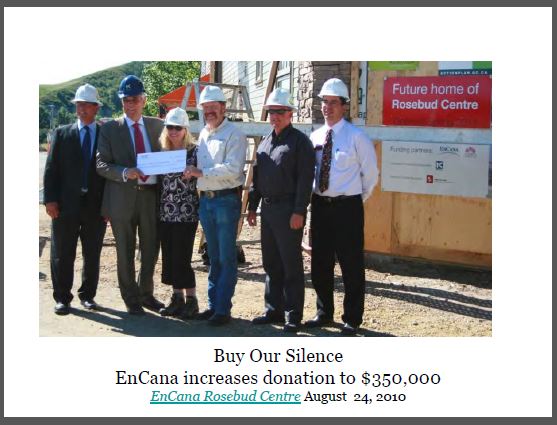
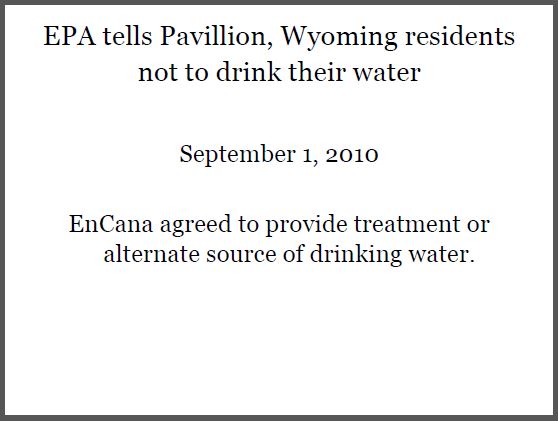
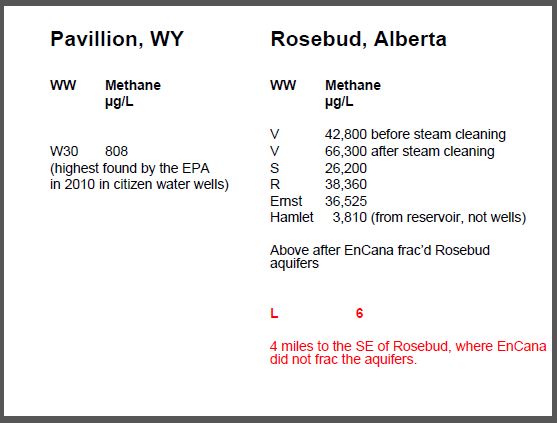
2014 08: Oil companies fracking into drinking water sources, new research shows
The study, however, found that energy companies used acid stimulation, a production method, and hydraulic fracturing in the Wind River and Fort Union geological formations that make up the Pavillion gas field and that contain both natural gas and sources of drinking water.
“Thousands of gallons of diesel fuel and millions of gallons of fluids containing numerous inorganic and organic additives were injected directly into these two formations during hundreds of stimulation events,” concluded Dominic DiGiulio and Robert Jackson of Stanford’s School of Earth Sciences in a presentation Tuesday at the American Chemical Society conference in San Francisco.
…
DiGiulio and Jackson plotted the depths of fracked wells, as well as domestic drinking water wells in the Pavillion area. They found that companies used acid stimulation and hydraulic fracturing at depths of the deepest water wells near the Pavillion gas field, at 700 to 750 feet, far shallower than fracking was previously thought to occur in the area.
…
The Stanford study focuses on Pavillion, in part because of DiGiulio’s familiarity with the area when he served as an EPA researcher in the latter stages of the Pavillion water study.
Industry and the state of Wyoming questioned the EPA’s methodology after its 2011 draft report found the presence of chemicals associated with gas production in residents’ well water. In June 2013, the EPA turned over the study to Wyoming regulators, whose work is being funded by EnCana, the company accused of polluting the water in Pavillion.
… The Stanford research does not explore the possibility of migration, focusing instead on the injection of fracking chemicals directly into geological formations that contain groundwater.
The EPA does not keep track of whether underground sources of drinking water have been hydraulically fractured as part of oil and gas development, said Alisha Johnson, a spokeswoman. “EPA does not maintain a database of all the wells being hydraulically fractured across the country,” she said in an email.
… “People think these formations are impermeable, and so they wonder, ‘Why are you worrying about water?'” DiGiulio said. “But it is an extremely heterogeneous environment, with areas of low and high permeability mixed together and with many lenses conducting water.” [Emphasis added]

